Forces Teaching Resources
Teach students about types of force and how they make objects move with forces worksheets, science games, activities and more teacher resources.
Stocked with printables and digital activities that are NGSS curriculum-aligned, this resource collection has been created to save you time on lesson planning. Explore our teacher-created resources to find everything you need to teach about balanced and unbalanced forces, the effects of gravity and magnetism and more core physics concepts to meet your state standards.
Whether you're new to teaching this section of elementary science or your'e looking for fresh ways to engage your students, our teacher team has you covered. Read on for a definition of force for kids and a look at the different types of forces with kid-friendly ways to explain them all.
What Is Force in Science? A Kid-Friendly Definition
We've all experienced force — whether we knew it by name or not. But how do you explain what forces are to your students? Let's start with a kid-friendly forces definition that you can use in your science lessons.
Force is something that causes an object to move, stop moving or change direction or causes an object to change its shape or size.
Let's say the window of the classroom is open, and a gust of wind blows in, blowing a piece of paper off of your desk. That is an example of a force at work!
The gust of wind interacted with the piece of paper, and the force of the wind caused the paper to move.
2 Types of Forces Explained for Kids
There are two main types of forces found in nature — contact forces and non-contact forces.
Contact Forces
Contact forces are a type of force that involves direct contact between two things or objects.
This type of force is responsible for many of real-world examples that your students have likely experienced such as the force of a friend making a swing move by pushing it or the force that a child has to exert to push a bicycle across the grass.
The example described above, in which a piece of paper was moved by the force of the wind, is a prime example of contact forces.
Non-Contact Forces
If contact forces involve direct contact, it's no surprise that non-contact forces are the very opposite. These forces can make objects move or change even from a distance.
Some common examples of non-contact forces include magnetism and gravity.
What Are Balanced and Unbalanced Forces?
We've also found it can be helpful to keep an explanation of balanced and unbalanced forces at hand when you're teaching your forces unit!
Tied directly to Newton's Law of Motion, these two concepts help explain how a force will affect an object's motion.
- Balanced Forces — When an object is subject to balanced forces, it will remain at rest if it was initially at rest. If it was already in motion, it will continue moving at a constant velocity.
- Unbalanced Forces — If an object is acted upon by unbalanced forces, on the other hand, the object experiences a net force in a particular direction. Due to this imbalance, the object will accelerate in the direction of the net force.
- If the unbalanced force is in the same direction as the object's initial motion, the object to speed up. If the unbalanced force is in the opposite direction, the opposite will happen. It will cause the object to slow down.
- Free Plan
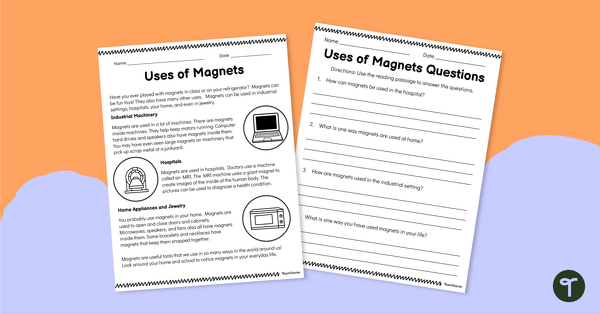
Uses of Magnets Comprehension Worksheet
Download this magnets worksheet to teach your 2nd grade students about the uses of magnets in our everyday lives.
- Plus Plan
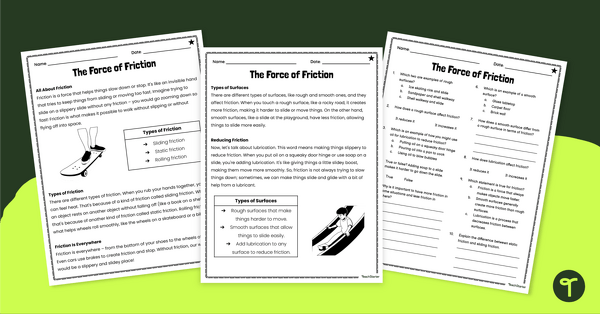
The Force of Friction Comprehension Worksheets
Download this friction worksheet to teach your 3rd grade students about the force of friction and its impact on our daily lives.
- Plus Plan
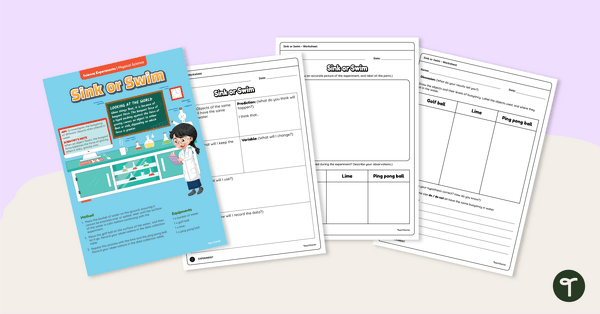
Buoyancy Experiment – Sink or Swim
Use this practical buoyancy experiment when teaching your students about why some objects float in water while others sink.
- Plus Plan
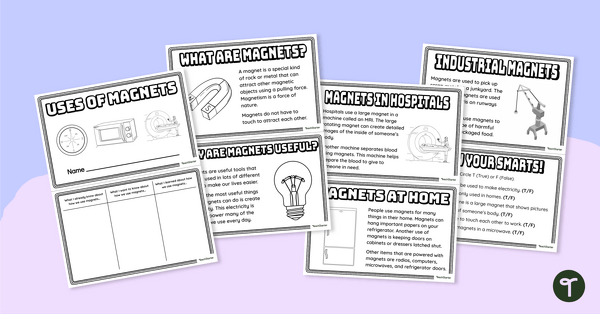
Uses of Magnets Mini-Book
Teach about everyday uses of magnets with this printable mini-book perfect for 2nd grade science lessons.
- Plus Plan
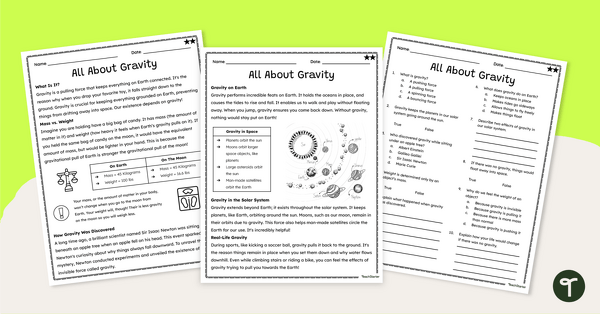
The Force of Gravity Comprehension Worksheets
Download this gravity worksheet to teach your 3rd grade students about the force of gravity and its impact on our daily lives.
- Plus Plan

High or Low Friction? Interactive Clip Cards
Explore high and low friction examples with your students using this set of 24 digital clip cards.
- Plus Plan
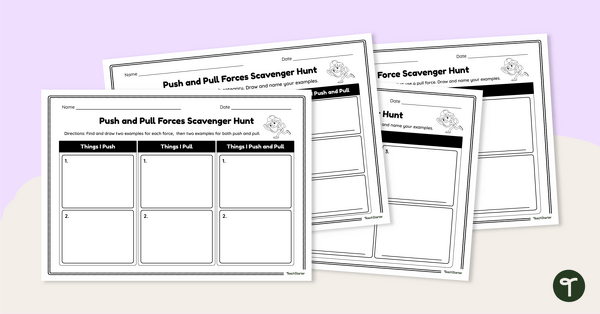
Forces and Motion Scavenger Hunt Worksheet
Use these forces and motion scavenger hunt worksheets when exploring push and pull forces in your 3rd grade science lessons.
- Plus Plan
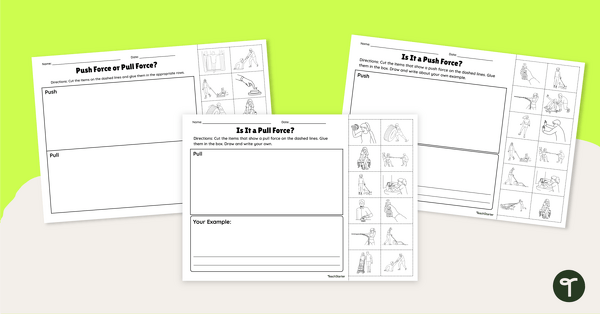
Push or Pull? Cut and Paste Worksheet
Use these push and pull cut and paste worksheets when exploring forces and motion in your science lessons.
- Plus Plan
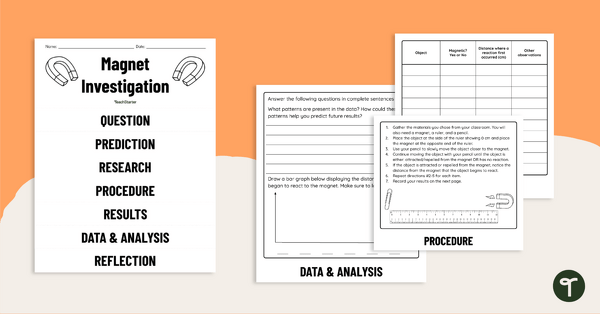
Magnet Investigation Flipbook
Explore magnetic and non-magnetic materials and investigate the strength of magnets with this investigation flipbook.
- Plus Plan
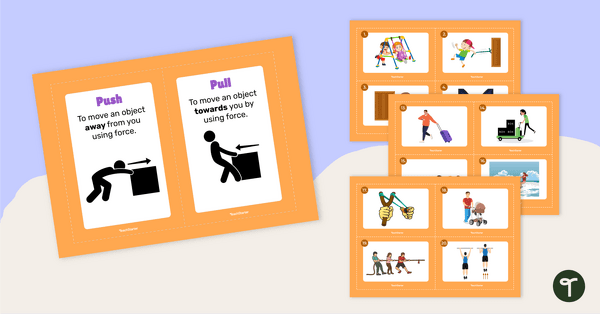
Push and Pull Sorting Activity
Use these push and pull sorting cards as a hands-on activity during your science lessons on forces.
- Plus Plan
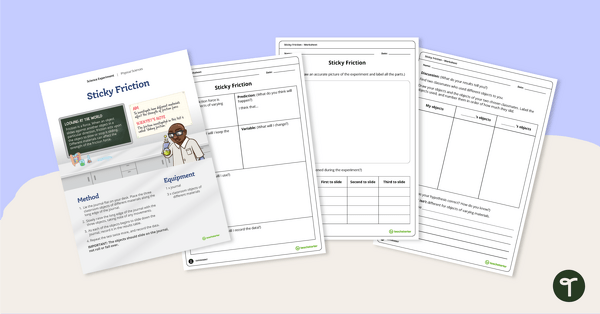
Friction Experiment - Sticky Friction
Use this engaging friction experiment when teaching your students about sliding friction and the effect it has on the movement of objects.
- Plus Plan
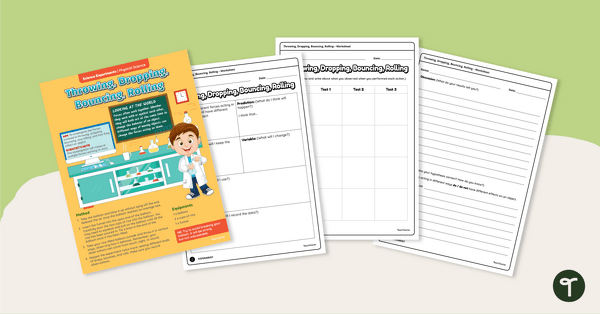
Force and Motion Experiment – Throwing, Dropping, Bouncing, Rolling
Use this hands-on force and motion experiment when teaching your students about how forces influence the movement of objects.
- Plus Plan
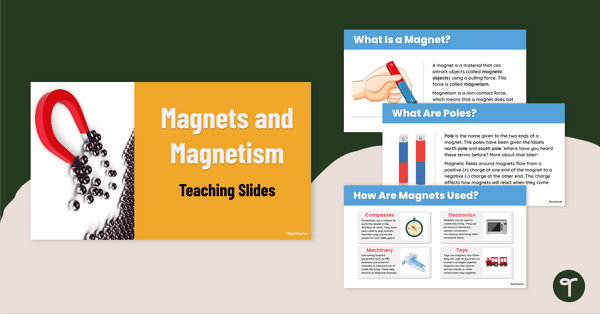
Magnets and Magnetism Teaching Slides
Teach your students how magnets and magnetism work with this comprehensive and age-appropriate teaching presentation for elementary school science lessons.
- Plus Plan
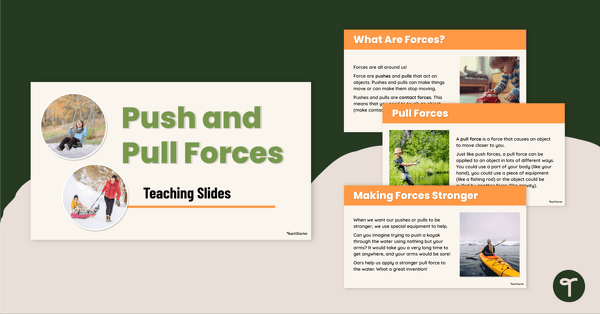
Push and Pull Forces Teaching Slides
Teach your students about push and pull forces with this comprehensive and age-appropriate teaching presentation for elementary school science lessons.
- Plus Plan
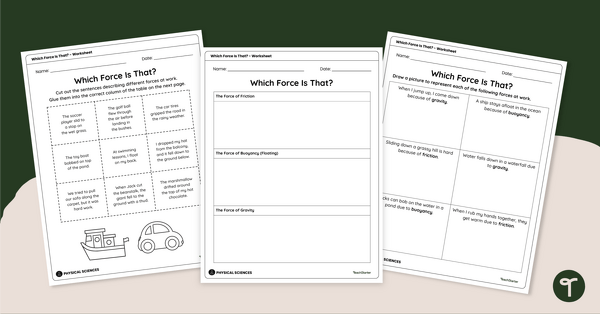
Which Force Is That? Worksheet
Use this forces worksheet to teach your 3rd grade students about the common forces of friction, buoyancy and gravity.
- Plus Plan
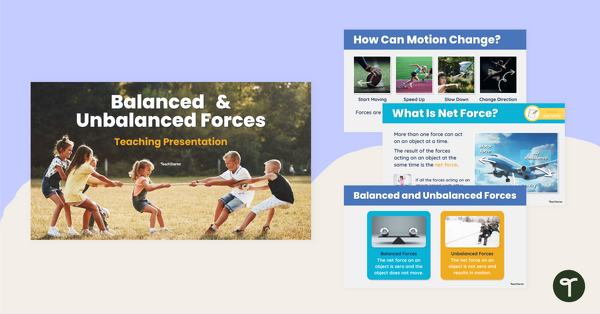
Balanced and Unbalanced Forces Teaching Slides
Teach your students about balanced and unbalanced forces with this comprehensive and age-appropriate teaching presentation for 6th grade science lessons.
- Plus Plan
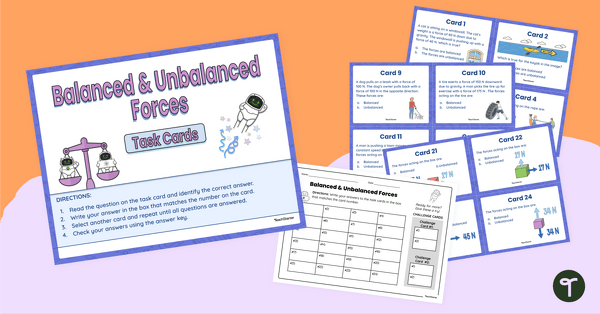
Balanced and Unbalanced Forces Task Cards
Use these force and motion task cards as a student review activity in your 6th grade science lessons.
- Plus Plan
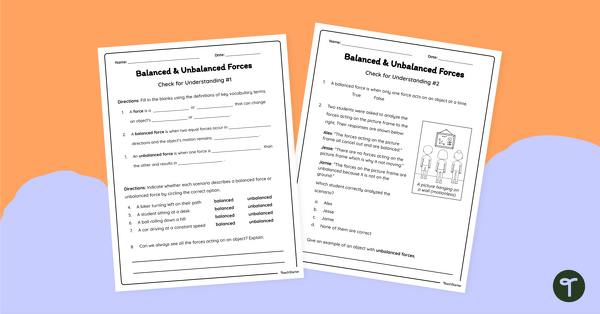
Balanced and Unbalanced Forces Quiz
Assess students' understanding of balanced and unbalanced forces with this force and motion quiz for 6rd grade students.
- Plus Plan
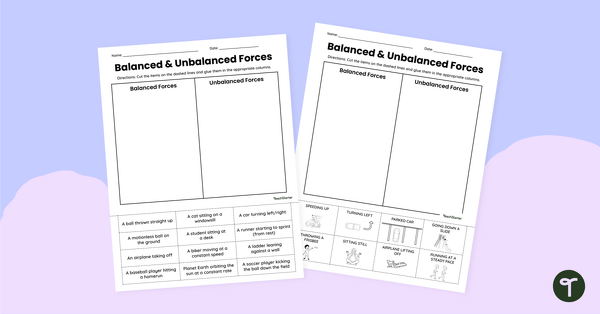
Balanced and Unbalanced Forces Cut-and-Paste Worksheets
Explore examples of balanced and unbalanced forces with your students using this set of two cut-and-paste worksheets.
- Free Plan
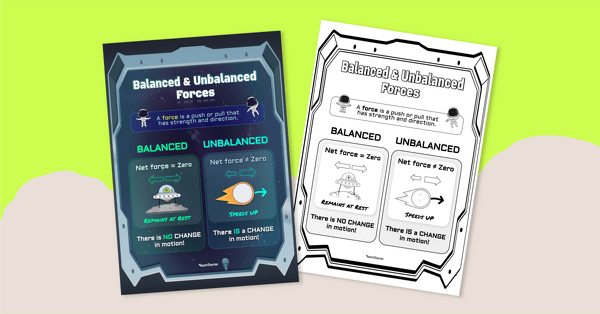
Balanced and Unbalanced Forces Anchor Chart
Use this force and motion anchor chart when teaching your students about balanced and unbalanced forces.
- Plus Plan
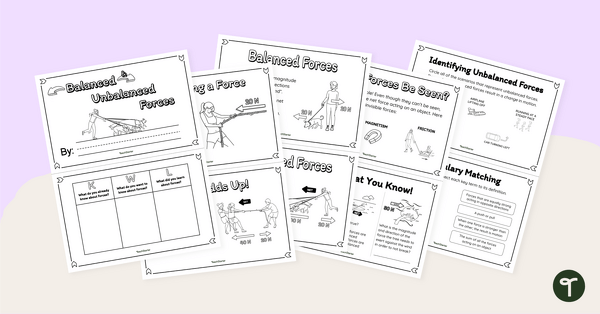
Balanced and Unbalanced Forces Minibook
Teach your students about balanced and unbalanced forces with this printable mini-book perfect for 6th grade science lessons.
- Plus Plan
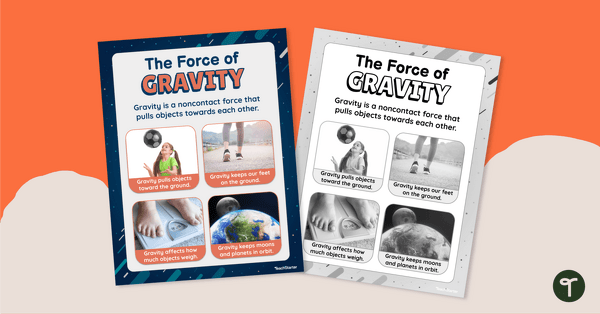
Gravity Poster
Teach students facts about gravity using this gravity poster perfect for 3rd grade science lessons.
- Plus Plan

All About Gravity Mini-Book
Get students exploring gravity facts for kids with this printable mini-book perfect for 3rd grade science lessons.
- Plus Plan
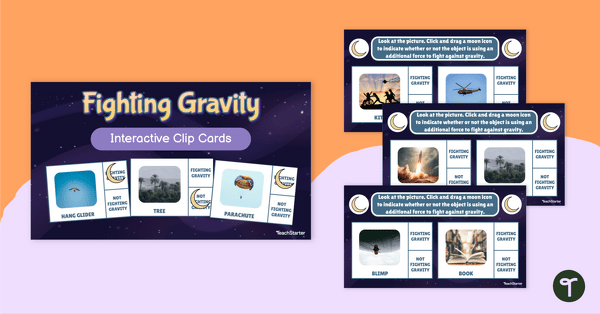
Fighting Gravity Interactive Clip Cards
Explore objects that must fight gravity to stay in their air with this set of 24 digital clip cards.
- Plus Plan
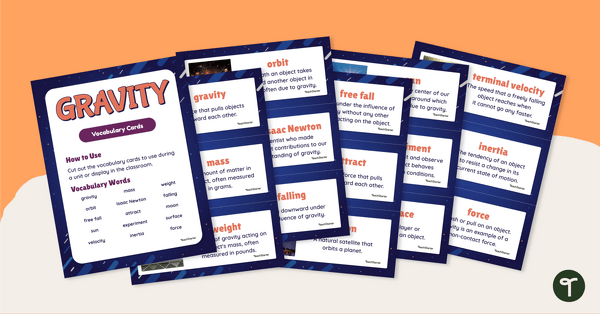
Gravity Word Wall Vocabulary Cards
Immerse your students in gravity vocabulary with this set of 15 illustrated vocabulary cards perfect for a word wall display.
- Plus Plan

Examples of Friction Poster
Show students examples of friction using this friction poster perfect for 3rd grade science lessons.
- Plus Plan

Friction Word Wall Vocabulary Cards
Immerse your students in friction vocabulary with this set of 15 illustrated vocabulary cards perfect for a word wall display.
- Plus Plan

All About Friction Mini-Book
Teach your students about the force of friction with this printable mini-book perfect for 3rd grade science lessons.
- Plus Plan

Push or Pull? Coloring Worksheet
Use this push and pull color-coding worksheet when exploring forces and motion in your 3rd grade science lessons.
- Plus Plan

Push and Pull Venn Diagram
Use this push and pull Venn diagram to help your students answer the question: Push, pull or both?
- Plus Plan

Object Movement Investigation Worksheets
Get students to push or pull on an object with this forces investigation for your 3rd grade science lessons.
- Plus Plan

Pushes and Pulls Mini-Book
Explore pushes and pulls with your students with this printable mini-book perfect for 3rd grade science lessons.